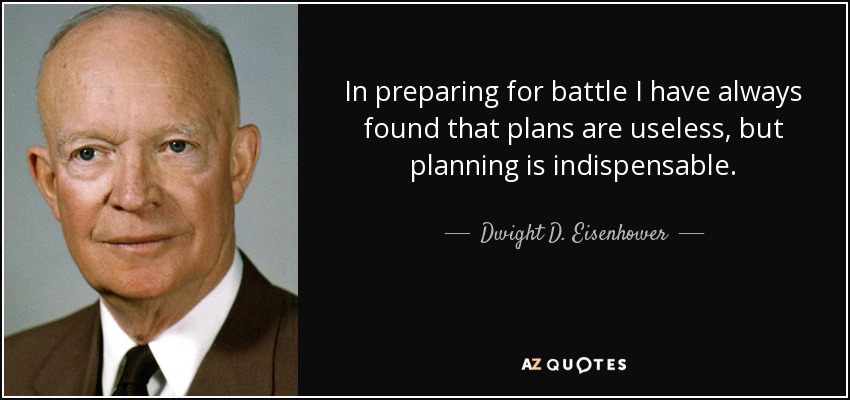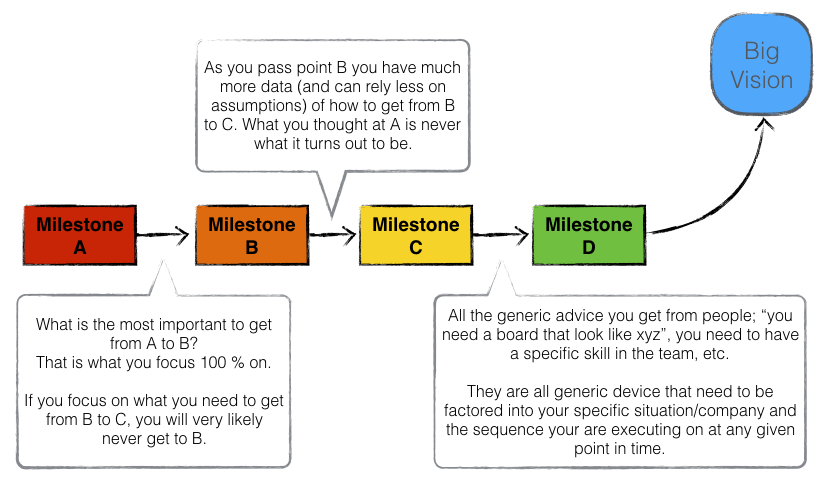Sequencing is “make or break” for building a startup
One of the most important things when building a startup is the sequence of how you execute. It is even more important than “doing the right things”.
You need to be laser focused and meticulous on the execution at hand, while driving towards your big vision of your company, and evaluating the plan regularly.
By NOT planning every detail of what needs to happens in the next 12 months, you are increasing your attention span on what is needed right now, while making sure you make the best decisions with as much data as you can at any given point in time.
When you are planning in detail what to do in 6 to 12 months, you are making decisions with a large number of assumptions and little data.
I am saying this so often to our portfolio company founders and the team at BootstrapLabs that it is starting to sound like a mantra:
Have faith in your assumptions, but trust your data.
And sorry – you are not getting away from planning, which is just as important to create a shared vision and understanding of the road ahead within the team. The assumptions are not less important. You just need to understand that they are just assumptions, and when and how they turn into data.
It is actually quite simple. When you launch a new startup, you are always underskilled and underfunded as you start to build, and you need to create a model of how you execute effectively where you are (shameless plug: we are trying to fix that with BootstrapWorks, still stealth – but sign-up for the waitlist!), while keeping your big vision in mind, and constantly reevaluating and changing the focus to adapt to the current situation.
For example: You know you are addressing a large market, and your product and DevOps really need to scale. You know that if you hit Milestone C you are going to have a million users of your product. You are now at Milestone A, and the reality is that unless you focus 100% on nailing the core Product Market Fit with your early customers to get to Milestone B, you will neither know what is needed from the platform to scale to a million users, or raise the funding to do so.
Ben Horowitz talk about wartime and peacetime CEOs in his book, “The Hard Thing About Hard Things”. Using those terms, when you start a new company you need to be in the wartime CEO mode, otherwise you will not survive long enough to fight your first real battle.
All of this applies before finding an initial Product Market Fit and before raising A/B rounds to scale. At that point the same mechanics apply, but both at a larger scale and longer timeframe. And you need to plan for resources much further ahead. But that goes back to the core message of this blog post. You always need to execute and optimize for where you are at any given point in time.





